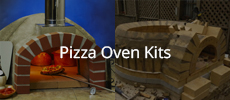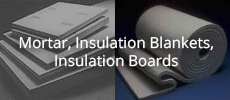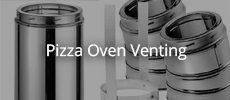Re: Casting Refractory - This is NOT a drill!
Thanks Enz! I see exactly what you did.....that is very clever.
George
Announcement
Collapse
No announcement yet.
Casting Refractory - This is NOT a drill!
Collapse
X
-
Re: Casting Refractory - This is NOT a drill!
George,
We sold the house and so can't take a pic, but I'll try to describe it in more detail.
The door is made from one sheet of .032" 304 Stainless Steel. The door is the shape of the arch at the front except the bottom two inches where it bends 90 degrees inward and goes all the way to the dome entrance. It has 2" aluminum feet to support it. The back left leg is 4 inches to the right to clear the thermocouple stand that goes in the doorway too.
I made a quick CAD model and attached a jpeg of it. At least I think I attached it.
Enz
Originally posted by fxpose View PostGlad to hear your oven has been performing flawlessly and to expectations over the last several years.
Are you able to post a photo of your manifold and the mods you made? If not, no problem...
Thanks a bunch,
George1 Photo
Leave a comment:
-
Re: Casting Refractory - This is NOT a drill!
Glad to hear your oven has been performing flawlessly and to expectations over the last several years.Originally posted by enz View Post3) Manifold your flu properly. In other words, make a nice lead in from the arch to the flu for better flow. I just had a square corner and have a little smoke come out of the front of the oven. To solve this, I made a stainless steel door that is open at the bottom and forces the smoke up the flu. As a bonus, the air that gets sucked in the bottom is blasted straight into the fire and helps the heat up immensely. I will make one for the new oven that I am building at our new house.
Are you able to post a photo of your manifold and the mods you made? If not, no problem...
Thanks a bunch,
George
Leave a comment:
-
Re: Casting Refractory - This is NOT a drill!
I am indeed around, but have not been checking the forum.
After four years this is what I have to report.
1) Mizzou castable is an awesome product. It has exactly the thermal properties of firebrick (it's not insulative in the least) and is easy to cast. That being said, it is EXPENSIVE. I spend just under $1000 to cast a 42" volto basso, not including the stand, insulation, flu or stucco.
2) Cast in one piece, or smaller pieces that will be assembled like a Forno Bravo kit. I cast my oven it two pieces, the front including the arch and the back. The oven cracked right along that line. That has not effected the performance one bit though. I patched with a bit more mizzou, insulated with pearlcrete and stucco'd over a 1" ceramic blanket decoupling layer. After 4 years the oven still works almost flawlessly (see 3, not an issue with mizzou).
3) Manifold your flu properly. In other words, make a nice lead in from the arch to the flu for better flow. I just had a square corner and have a little smoke come out of the front of the oven. To solve this, I made a stainless steel door that is open at the bottom and forces the smoke up the flu. As a bonus, the air that gets sucked in the bottom is blasted straight into the fire and helps the heat up immensely. I will make one for the new oven that I am building at our new house.
Feel free to send me a PM if you have further questions. I don't always get e-mail alerts when people post to this thread.
Enz
Leave a comment:
-
Re: Casting Refractory - This is NOT a drill!
Thanks Altamont for this in depth information!
My only worry/question i have:
can a castable refractory replace the properties of a firebrick?
im always worried that a cast oven wont hold the heat as long as an oven out of firebricks would . and when you say the fibers leave tiny holes behind, that sounds like its more insulative due to the airpockets.
I hope enz is still around to report back on this issue or anyone else with long term experience with that mix?
by the way do you get a discount for that stuff just saw some shocking prices!
All the best
hendrik
Leave a comment:
-
Re: Casting Refractory - This is NOT a drill!
Another note on castable refractories: By nature they all use water in the mix. And there is always going to be more water than is required by the chemistry within - all of the binder/cement will have sufficient water if you add enough water to be able to pour the material. All of the excess water (that is not tied up in the bonding) will turn to steam when mixing and that needs to be allowed to be driven off during the initial heats until it is all gone. Those fibers mentioned above assist in that.
But another side affect of excess moisture is that, if too much water is added, it can actually weaken the strength of the final cast shape.
BUT THERE IS AN EASY TEST FOR THIS when mixing. In the industry it is called the "ball in hand test". As you are mixing and adding water, stop any mixing and grab a baseball sized sample or slightly smaller (if you use a mixer be sure it is OFF! Safety first!). Form a ball with it. Rest it in your hand, palm up and fingers slightly splayed apart. Jiggle your hand.
- If the ball of material falls apart easily it is too dry. Add a little water.
- If the material slightly slumps between the fingers but the ball stays
together you have a great mix! Do not add any more water. Mix a bit
more and confirm by doing another test.
- If the material flows down between your fingers and easily drips it is TOO WET.
Kind of late as it is impossible to remove water. And adding more
castable is touchy - you don't want to grab a lot of binder out of
the next bag changing its proportion of materials.
Ideally, the castable can be mixed 'slightly' on the dry side. This means it is slightly harder to work with - it will not pour and will require a lot more vibrations to settle it and remove voids. But it will be stronger because it will have less excess water and be closer to having just the water needed for the binder. Again, it will be harder to work with and if you do not have a good mechanical vibrator used for pouring concrete you run the chance of having voids - "honeycomb" in the final product.
Have fun with this information!
Leave a comment:
-
Re: Casting Refractory - This is NOT a drill!
I am not associated with or have seen the oven in question. But I am a Ceramic Engineer that worked in the field for a long time, and worked for AP Green who developed Mizzou Castable. APG merged with others when manufacturing plumeted in the USA.
Unless discussing something different, the short fibers mentioned disappear when heated - sublime/sublimation is the term meaning they go from a solid to a gaseous state - leaving extremely small tubes/pores behind. These reduce cracking by stopping crack propagation (cracks travel; when a crack hits a pore the stresses at the tip of the crack can no longer stay concentrated as there is no crack point anymore; the crack then stops there). Great technology! Additionally, these tiny tubes/pores left behind create extremely tiny 'vents' for steam to travel in. This reduces the pressure of steam during the initial heatups!
Ultimately, IF anyone is going to cast an oven using a castable refractory you really, really should request that these fibers be included.
But do NOT confuse these fibers with the stainless steel needles that might be supplied by your supplier. Those are sharp, remain in the castable, eventually will rust which expands their size risking the eventual creation of cracks from the inside out (i.e. ceramics are strong in compression but not tension - such inside pressure puts the material in tension). I got cut up a few times by leaning on a cast shape that used those (you can't help but have some needles exposed on the surface).
- Likes 1
Leave a comment:
-
Re: Casting Refractory - This is NOT a drill!
Unlike portland cement concrete, calcium aluminate mixes do not need an extended curing time. ie kept moist for a week or so. They rely on a different chemical reaction and set without need to cure in 24 Hrs. Some time should be given though, about a week, to allow the moisture to dry out before firing.
Dave
"Kindled with Zeal and Fired with Passion"
Leave a comment:
-
Re: Casting Refractory - This is NOT a drill!
how is the oven holding up?
spalling,cracks etc..?
Im thinking to cast one aswell this year!
cheers hendrik
Leave a comment:
-
Re: Casting Refractory - This is NOT a drill!
ANH Refractories is in Richmond, probably 45 minutes each way for you across the San Mateo Bridge.
They have Dozens of types of refractory concretes all listed on their website ( ANH Refractories ), but most of them are insulative. Be careful. I talked with their head sales guy (Bill?) to match the thermal characteristics of fire brick (density, emissivity and specific heat). The bonus with the mizzou was the quick heat up schedule.
They also have fire brick, insulation board, etc. It's one stop shopping. I don't know about flu liners, I ended up casting the whole chimney because I couldn't find the size I wanted. I didn't ask at ANH though, they might have them.
I used 25 bags total and had just enough with my varying thicknesses. If you make a mold for just the top and keep your thicknesses even, I think 10 bags should do it.
Good luck,
Enz
Leave a comment:
-
Re: Casting Refractory - This is NOT a drill!
Thanks for the reply enz. I do have a few questions. I'll post them here in case others have similar questions, but if you'd rather not answer them on the forum I understand and you can email me directly.
My plan is to cast only the top dome and make a circular ring as a dome base out of standard fire brick, similar to the design for Superior Clay?s cast ovens:
This should reduce cost by eliminating some of the refrac cement I?d need to buy. Basically the firebrick sides would take the place of your cast vertical sides.
Do you think the cement mix you used would be able to stick to a mold of about the shape in the pic without the need for an exterior mold to hold it in place?

Where did you get your refrac cement (I?m in Redwood City)? Why did you choose Mizzou?
Any idea how many bags of Mizzou you used for just the body of the oven?
Do you know of good places in the Bay Area to look for fire brick and ceramic flew liners?
Lots of questions I know, thanks for the help.
Dave
Leave a comment:
-
Re: Casting Refractory - This is NOT a drill!
Dave,
Sorry for the delay. I had the same train of thought. I'm guessing I save about $2300 over the kit. Feel free to contact me directly if you have questions.
I've now done pizza 5 times in a total of 8 burns. It's definitely fully cured. I roasted a chicken Saturday night after lunchtime pizza. What a treat. Incredible flavor. Almost better than the pizza. Did I say that out loud.
Now I need to stop making pizza long enough to insulate the oven.
Enz
Leave a comment:
-
Re: Casting Refractory - This is NOT a drill!
This looks amazing! I can't belive I found your post right away, you've done exactly what I'm hoping to do by casting your own oven. I've been looking into the many kits offered out there and can't belive the prices they charge for some very basic components. It all looks like precast refractory cement to me so I figure I could do it myslef instead. I'm still formulating my plan but I may have some questions for you down the line, if you don't mind?
Great looking oven!
Dave
Leave a comment:
-
Re: Casting Refractory - This is NOT a drill!
Redbrick,
Thanks for the encouragement. Like so many others, after the shell is done and pizzas are flowing, I need to take a break. My house and family need some attention.
I'll be laying on 6" of perlcrete in a few weeks and after that it's stucco time. The next pictures should be of a completed oven.
Enz
Leave a comment:
-
Re: Casting Refractory - This is NOT a drill!
Yo.. What is the latest on your oven? It's awesome.. Any more pictures?
Leave a comment:






Leave a comment: